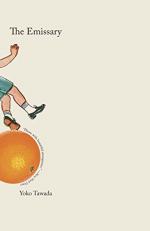|
This section contains 756 words (approx. 2 pages at 400 words per page) |

|
Birds
Varied recurring images of birds throughout the novel represent the possibility for freedom beyond the confines of societal structure. Most frequently the narrator describes Mumei as a bird, his appearance and movements imitative of winged creatures. Yoshiro also likens other people he encounters to birds, describing their mouths as beaks, or the necks as that of a crane's. These images illustrate Yoshiro's desire for boundlessness, for a life unrestricted by his culture and seemingly endless life.
Translation
Throughout the novel translation works to symbolize the effects of time on the individual's understanding of himself and his world. Yoshiro's many meditations on the evolution of language show his obsession with the transience of the written and spoken word. The narrative's perpetual references to translation indicate the instability of story, culture, time and place. No one word or image seems to carry a singular meaning, or to remain...
|
This section contains 756 words (approx. 2 pages at 400 words per page) |

|




